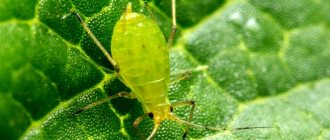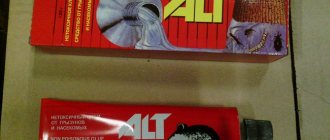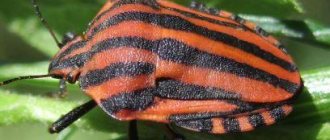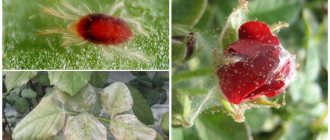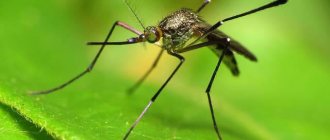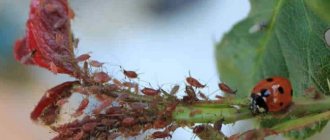Content
- Purpose of hunting belts
- Types of hunting belts
- a) Adhesive (sticky) tree catching belt
- b) Protective hunting belt for trees
- c) Insecticide-impregnated and “repellent” belts
- How to make a catch belt yourself
- Advantages and disadvantages of using insect traps for trees
A catching belt is a simple and at the same time very effective way to protect fruit trees from insect pests. The material discusses the purpose, types of hunting belts, the procedure for their independent production, etc.
Apple tree pests and how to get rid of them
Garden parasites try to gnaw at the apple tree. Every gardener should know how to protect their garden and eliminate pests.
codling moth
The apple codling moth is a small butterfly with a gray-brown color. The size of the insect's wings reaches 2 cm. The butterfly does not pose any particular danger; it does not eat fruits, as the name might suggest, but breeds caterpillars. But small parasites will appear at the moment when the apples are already hanging on the tree. Fight pests with improvised means.
- Fermented compote is left near the tree. It is advisable to pour the drink into shallow containers. By the end of the day there will be a ton of butterflies on the surface. This method helps to at least slightly reduce the number of moths.
- You can prepare a decoction of hot pepper. Take 6 pepper pods, throw them into a pan and fill them with water. Place the pan on the stove and bring to a boil. Then add 100 g of the finished broth to 5 liters of water.
- Traditional treatment does not always help. Biological agents help get rid of the disease. The best include bitoxibacillin and lepidocide. But as a supplement, you can use chemicals against the moth: Decis, Kinmiks, Karbofos.
codling moth
Rhododendron: status obliges. Choosing a landing site and suitable environment
Sawfly
The sawfly is somewhat similar to the previous pest. It also eats fruits, gnawing out the pulp, and is able to do this at an early stage of development (the appearance of the ovary). To prevent the destruction of the embryo, trees are sprayed with folk remedies.
- An infusion of wormwood is very simple to prepare. Add crushed wormwood to 1 bucket of water. The homemade infusion should be left for 2 days in a dark place.
- To prepare mustard infusion you will need 100 g of mustard and 5 liters of water. The components are combined, mixed and left for half a day.
You can treat the trunk, leaves and roots with Alterr or Vantex, and not a trace of the sawfly will remain.
Sawfly
Medyanitsa
The body length of the honeydew reaches 2.5 mm. The female pest lays eggs directly on trees. To prevent the worm, orchards are treated with home remedies.
- Take 300 g of tobacco and add it to a bucket of water. Boil a little and cool. Add 50 g of soap to the cooled infusion.
- To prepare the following composition, you will need to chop the bird cherry branches: 300 g of the prepared raw material is poured into a bucket, filled with water and set to boil for 30 minutes.
Important! Any chemicals are suitable (for example, dimethoate, kemifosom, confidor), but they can be used 1 week before the buds open. After some time, the procedure should be repeated.
Medyanitsa
Shchitovka
Green larvae 3 mm long often appear on apple trees. This is a scale insect, which is considered the laziest insect. On an adult apple tree it eats up the bark and makes a hole. Throughout the development of the tree, the insect feeds on apple juice through a hole in one place. If there is a large concentration of beetles, the tree grows poorly and the fruits become deformed. To get rid of an insect mechanically, you need:
- carry out regular pruning;
- clear the trunk of old bark;
- Wash off pests from the tender bark with soapy water.
You can get rid of black bugs on an apple tree in several stages. Before the buds open, the trees are treated with a special composition (7 g of calcined salt + 70 g of green soap + 3 liters of water). Alternatively, choose the drugs DNOC or nitrafen. In case of the appearance of a rodent, fly or other harmful insects, use karbofos, phosphamide, actelik.
Shchitovka
Aphid
Aphids are small insects that attack any plant in the garden. It's practically invisible. It seems like a small parasite, but it brings a lot of problems: the affected leaves curl, the shoots dry out, the buds become deformed.
- You can use the simplest method: take a hose with water and turn on high pressure, completely walking through the foliage. This will wash away the pests.
- Or make an effective remedy (dilute 100 g of mustard powder in 1 bucket of water) and spray the trees.
But all these are temporary measures, because when the foliage dries out, the aphids may appear again. To completely destroy it, oleocuprite and nitrafen are used as an additional method. After flowering, actara, corsair, and varant are used.
Aphid
Flower beetle
The apple flower beetle is popularly called a weevil; it feeds on the buds and buds of fruit trees, in particular apple trees. Trees are treated before buds open and before flowering.
- Take half a bucket of onion peels and fill it to the brim with hot water, but not boiling water. The composition should stand for 3 hours. If you leave it overnight, then in the morning before use you need to dilute the strong solution with water.
- To prepare the pine product you will need 50 g of pine needle concentrate and 1 bucket of water. Mix everything and spray the apple trees.
If folk remedies do not save you, then you can use Fufanon, Iskra and Novaktion.
Flower beetle
Mole
The apple moth resembles an ordinary butterfly, only small in size. Its caterpillars eat the leaves and then spin a web. To combat it, make infusions from potatoes or tomatoes, or use ground pepper (1 teaspoon per 1 bucket of water). The infusion should stand for 2 days before use.
Apple moth
Entobacterin, lepidocide, fozalon or dimilin are used as additional control.
Red tick
This insect is almost invisible on fruit trees. Despite its small size, the small pest destroys leaves. Such mites are not found alone; they attack the plant in whole colonies and can gnaw leaves all day long, leaving behind a web.
Red mite on an apple tree
Meadowsweet - medicinal properties and contraindications, tea with meadowsweet
To get rid of them:
- Take 500 g of garlic and pass it through a garlic press. The resulting slurry is poured with 1 bucket of water and mixed. After a day you can use it.
- Pour 300 g of horse sorrel roots into 5 liters of hot water. Once the composition has cooled, you can spray the leaves.
Of the ready-made preparations, anti-mite, fufafon, and nitrafen have proven themselves to be good.
Bark beetle
Bark beetle on an apple tree
Bark beetle on an apple tree: methods of combating these insects, of which there are several types in nature, help in a variety of ways. They can be noticed immediately after the apple orchard blooms. People call it that because it damages the tree bark. They hibernate under it and devour it. Female apple bark beetles do not die; they can lay eggs several times during the season. How to deal with the harmful bark beetle on an apple tree? The best way is to use copper sulfate.
Ognevka
Moth on an apple tree: how to fight if the trees are affected by this attack? In autumn or spring, all tree trunk circles should be covered with roofing material and old film. You should start from the base of the tree and up to the crown. The trap can be removed in mid-summer. As an alternative, high hilling is suitable.
Mice
Mice usually damage the trunk of a tree. But unlike other rodents, they cause light damage affecting the outer part of the bark. How to save an apple tree if mice have eaten the bark of the tree? If the damage is superficial, the trunk can be tied with polyethylene. When the affected areas dry out, this indicates the tree is healing. If the dying process is irreversible, then it is urgent to replant the bark from a healthy tree.
Mice
After some time, many gardeners again complain that the apple tree has been chewed by mice. What to do if the film did not help? There is another effective way - clay and cow dung. The damaged area is cut off and smeared with clay, and the top is wrapped in cloth, which is regularly moistened with water.
Hares
Apple tree bushes have been gnawed by hares, what should I do? It is urgent to treat the gnawed areas with garden varnish (applied in a thick layer), otherwise the trunks will begin to dry out. If the jumpers remain, then the apple tree can be restored. After treatment, it is better to wrap the barrel with lutrasil, which can be secured with wire.
Ants
Ants on an apple tree
Traditional methods allow you to get rid of ants quickly and effectively. You can use kerosene with carbolic acid. The smell will repel small pests, and the acid will destroy them. To obtain the product, mix 10 liters of water, 400 g of black soap, 1 tbsp. kerosene and 2 tbsp. spoons of acid. The prepared solution is poured into the anthill.
They also make all kinds of traps. How to make trapping belts for ants on an apple tree? Nowadays, almost everyone has a car, so finding an old tire in the garage is not difficult. You need to cut it lengthwise to make several rings.
Next, a trench is made near the infected tree, around the trunk. A tire is placed on top of the trunk and filled with water. Pests will not be able to swim across the “pool” and get to the tree.
Ant traps on trees
You can make catching belts for apple trees with your own hands from ordinary tape. To do this, you need to wrap the belt around the barrel with the adhesive side facing out. Ants, crawling onto a tree, will stick to the tape.
A sticky belt is also made using glue and thick paper. Cut out a rectangle 25 cm wide. Apply glue to one side. A belt is attached 0.5 m upward from the ground. The cracks on both sides are lubricated with clay.
Sticky Hunting Belt
Purpose of hunting belts
A trapping belt (a trapping ring) is essentially a mechanical method of protecting plants from insect pests. They are arranged primarily to protect fruit and berry garden plantings from ants or caterpillars of pear, plum, apple moths, and apple blossom beetles, that is, insects that hibernate or pupate under the scales of old bark and in the soil of tree trunk circles.
| READ MORE: THREE main ways to get rid of ants on your property and in the greenhouse |
In addition, in scientific entomological research, trapping belts are used for catching, collecting and studying insects - numbers, population density, the influence of various environmental factors on the morphological features of the structure of individuals, assessing the biotopic diversity of species, etc.
Types of hunting belts
Several types of hunting belts are used - adhesive hunting belt, protective and impregnated with insecticides.
a) Adhesive (sticky) tree catching belt
Sticky belts are made using special glue, which is applied either to thick strips of paper, fabric, non-woven material, or directly to the tree trunk with a girdle rim. The mechanism of action is to adhere insects.
This glue is produced in tubes (trademarks “Chisty Dom”, “ALT”, “Napoval”, “Domovoy”, “EUROGARD”, “ECOTRAP”, “ARGUS”, etc.) or in aerosol form (trademark “Green Belt” and etc.). The aerosol form is preferable for use as it ensures uniform application of the adhesive.
Examples of insect repellent glue for catching adhesive belts
The glue itself does not dry, has a long shelf life, remains sticky for a long time and does not change its properties. This is ensured by its polymer base and special composition (polyisobutylene provides moisture resistance, polybutylene is responsible for viscosity and plasticity, cycloisan enhances adhesiveness).
For the convenience of gardeners, it is now possible to use ready-made garden catching belts for trees - these are strips of fabric or non-woven material with an adhesive composition already applied. For example, the brands “Your Economy”, “No-guest”, “ARGUS”, “Kapkan”, “Inta-Vir”, etc. As a replacement, you can use sticky adhesive fly tapes.
Examples of manufactured ready-made adhesive belts for protecting trees
b) Protective hunting belt for trees
The mechanism of action is to delay insects when trying to climb the trunk to the crown of the tree.
The protective catch belt can be dry. The materials for them must be either so smooth that the insect cannot find a point of adhesion to the surface of the belt and falls to the ground, or fixed in such a way that the insect cannot find its way up, for example, as happens when a burlap trapping belt is secured to the top part of the material.
Dry, oil repellent, insecticidal tree belts
Protective belts of this type can also present other obstacles that are difficult for insects to overcome. For example, oil. Ants do not like to overcome oil barriers. The belt is made with vegetable oil on wood, palm width (10-12cm). You can use any vegetable oil (sunflower, linseed, hemp, etc.) or technical machine oil. It is recommended to add stove soot or sharply odorous substances (smoking liquid, diesel fuel, etc.) to the oil composition.
It is allowed to alternate glue strips with oil strips - this results in the so-called “double protection”.
c) Insecticide-impregnated and “repellent” belts
Insects caught in a trapping belt impregnated with insecticides die. For impregnation, insecticides are used that are specialized in killing insects that, according to observations, fall into the trapping belt at this time of year (beetles, caterpillars, ants).
This type of belt also includes “scaring” belts. Tree trunks are tied with strips of fabric soaked in kerosene, diesel fuel or carbolic solution. The pungent smell will completely repel insects. After 10-14 days, as the smell evaporates, the impregnation is renewed. Fabric impregnated with pungently smelling substances can be spread on the soil in tree trunk circles, this is guaranteed to provide protection from insects, including soil-dwelling ones.
The only limitation is that these belts are not recommended for use on young seedlings to avoid burns.
What are the varieties?
There are several types of traps:
- sticky;
- poisonous;
- dry.
Advantages of each type:
- Glue. The material is fixed around the barrel and thickly coated with non-drying glue. The most commonly used is intended for rodents. The disadvantage is that everything alive sticks to the belt. Beneficial insects are also caught in the trap along with pests.
- Funnel-shaped. The belt is secured in the form of a cone. The wide side is placed at the bottom, and at the top they ensure a tight fit of the material to the surface of the barrel. To do this, the joint is coated with clay and tied with rope. To achieve maximum effect, the material is impregnated with an insecticidal solution. The pests, moving upward, find themselves inside the funnel and die due to the action of the poison.
- Rubber funnel with vegetable oil. A strip is cut out of rubber, then secured by first bending the edges and filling it with an oil solution. Glue using rubber glue. The insects get caught in the oil, from which they cannot escape, and as a result they die.
See also
Description, characteristics and regions of distribution of the Aphrodite apple treeRead
The advantage of the method is durability. As the trunk grows, the rubber stretches.
- Double-sided funnel. For production, use a strip at least 30 centimeters wide, soaked in an insecticide solution. They fasten it around the trunk, tie it with a rope at the bottom and top, thereby dividing the belt into three parts.
In order for the poisonous liquid to remain in the impregnated material longer, the entire belt is placed under polyethylene, leaving the lower edge free.
How to make a catch belt yourself
The work plan for the manufacture and arrangement of trapping belts for trees against garden insects and pests is recommended as follows.
| 1. | It is advisable to equip trapping belts in early spring, while the temperature remains around +5°C, since at values above this indicator, beetles, for example, the apple flower beetle, leave their wintering places and climb the trees. |
| 2. | The place for the hunting belt is first prepared (dry and dead bark is cleaned and removed). |
| 3. | The height of the belt placement is 0.3-0.5...1.0-1.5 m, the number of belts on a trunk or one large branch is 1-2. |
| 4. | A hunting belt in general form is a strip 10-12 cm wide in several turns. The total width of the belt should not exceed 20cm. |
| 5. | The material of the belt is burlap, rags, straw, non-woven material, thick paper, plastic film, etc. It is better to use non-woven material, it is not subject to rotting, dries quickly after rain, and tree bark does not rot. |
| 6. | The material is tightly fixed with twine, twine, rope or wire on a tree trunk or thick twigs and branches in 2 places - above and below the belt, retreating 1.5-2 cm from the edges. It is better to use polypropylene twine. |
| 7. | To ensure a tight fit of the hunting belts, it is recommended to use a foam rubber backing, or better yet, polystyrene foam. The cracks can be covered with clay or plasticine. |
| 8. | It is allowed to make a double belt - from 2 strips, at a distance of 20 cm from each other. Moreover, alternating between glue, or “repelling”, or oil, or two glues, etc. |
| 9. | Glue is applied with encircling rims. Since the glue is very viscous, in order to apply the glue evenly, it is better to slightly heat the tube to 50-60°C, then spread the glue evenly with a spatula. It is much more convenient to apply aerosol glue. |
Plan diagram for the production of catching adhesive belts
If ready-made catching belts are used, then the labor intensity of the process is minimal. It is enough to wrap a ready-made adhesive belt around a tree trunk/branch with the sticky side facing outward with a slight overlap of 2-3 cm. For better fixation, you can additionally tighten it with twine.
The adhesive belt protects the tree throughout the season and does not need to be replaced. However, as they become filled with insects, the sticky belts are renewed.
Principles and rules for using traps
The effectiveness of trapping belts largely depends on what tactics are used. It is unlikely that you will be able to protect your garden by installing catch belts alone. It is important to know how to use them correctly, how often to renew the sticky strips and refresh the poison. In practical terms, it is recommended to follow these steps:
- Traps are installed at a height of 30-60 cm from the ground surface, but the installation location should be below the skeletal branches of the tree.
- Installation is carried out before the buds begin to bloom on the tree;
- Trap belts are installed on all fruit trees in the garden;
- Inspections are carried out whenever possible every day;
- Stone fruit trees are freed from the belts after harvesting, and with apple trees, pears, and especially winter varieties, the belts remain on the trunks until the first frost and the beginning of leaf fall;
- When traps are installed, it is imperative to trim the grass under the trees.


